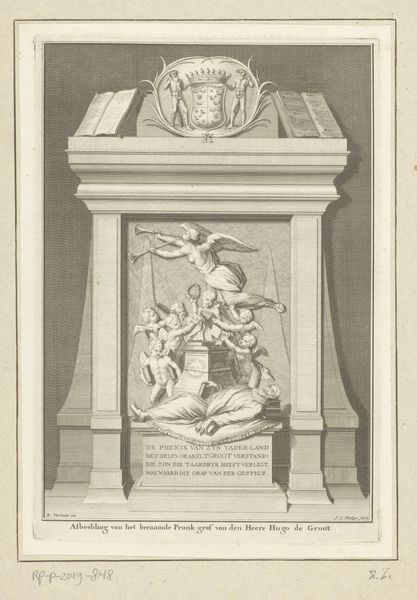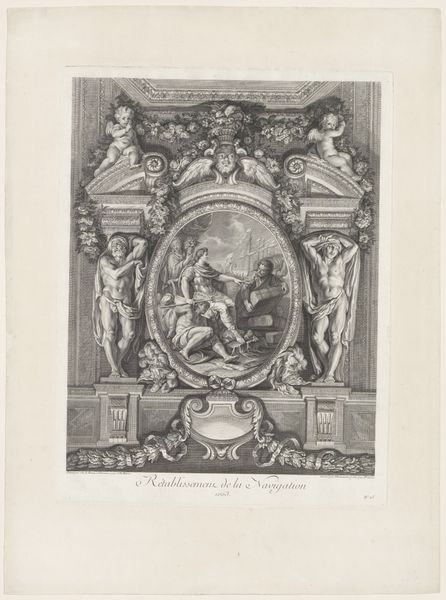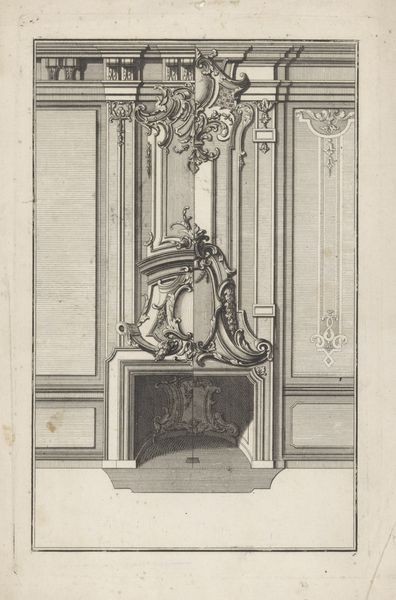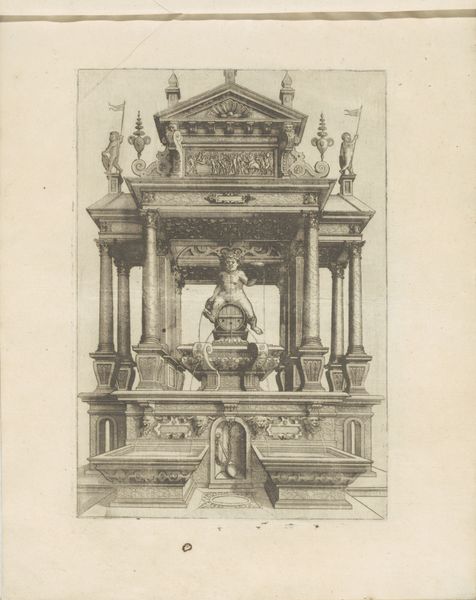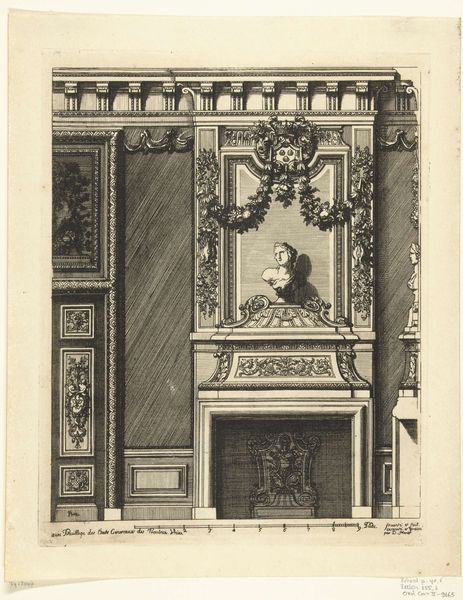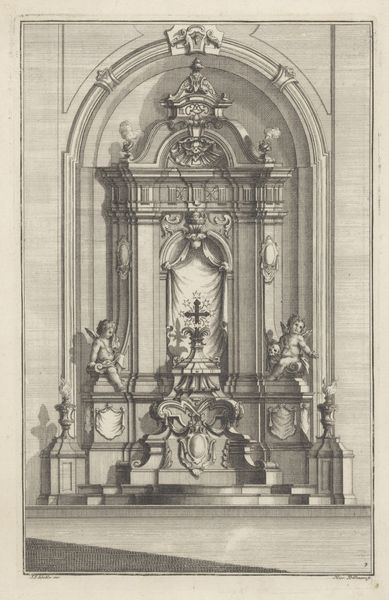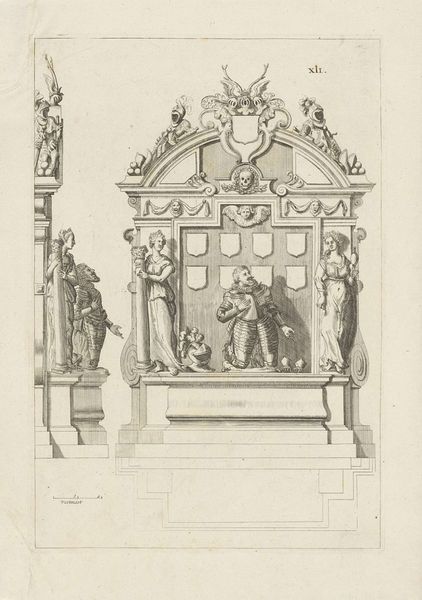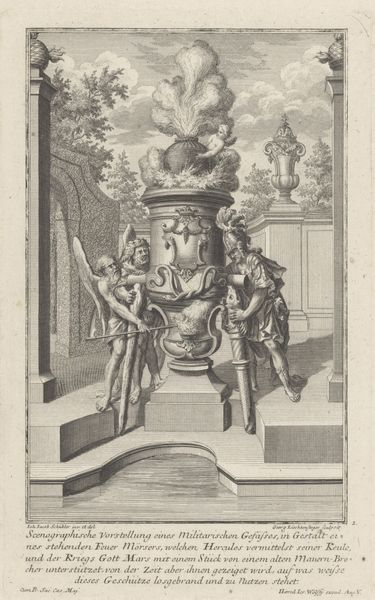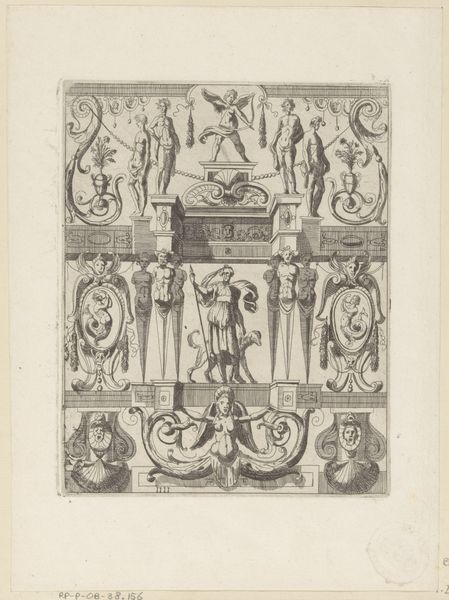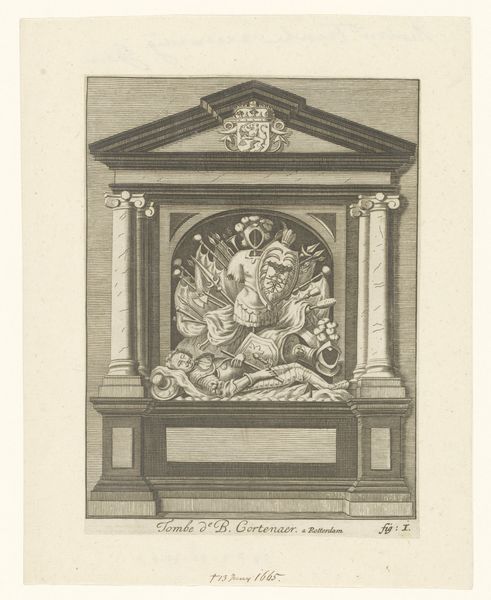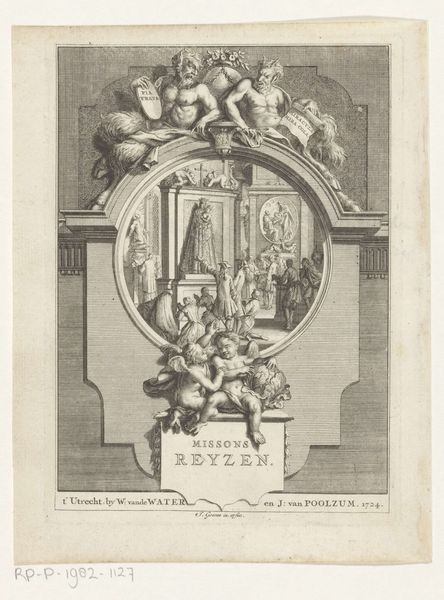
drawing, print, engraving, architecture
#
portrait
#
drawing
#
aged paper
#
toned paper
#
light pencil work
#
parchment
# print
#
pencil sketch
#
old engraving style
#
sketch book
#
figuration
#
11_renaissance
#
personal sketchbook
#
line
#
pencil work
#
history-painting
#
storyboard and sketchbook work
#
academic-art
#
italian-renaissance
#
engraving
#
architecture
Dimensions: height 433 mm, width 336 mm
Copyright: Rijks Museum: Open Domain
This print, depicting the lost tomb monument of Pope Gregory XIII, was made with etching. The artist's name is unfortunately lost to history. The medium is important here. Engraving and etching were crucial to the development of the print market, making imagery widely available. This tomb monument was originally made from stone, by skilled artisans. The print translates that massive, three-dimensional effort into a reproducible image. Consider the labor involved in quarrying, carving, and transporting marble, as opposed to the relatively quick process of creating a copper plate, which could then be used to create many impressions. This image reflects the social and economic context of the time, and the transition from patronage based production to proto-capitalism. It suggests a shift in the means of production and consumption of art, from unique objects of devotion to easily reproducible images. Seeing how the artwork came into being allows us to understand its broader cultural significance. It transcends the traditional boundaries between fine art and craft, and invites reflection on the nature of artistic creation, and its connection to social forces.
Comments
No comments
Be the first to comment and join the conversation on the ultimate creative platform.


